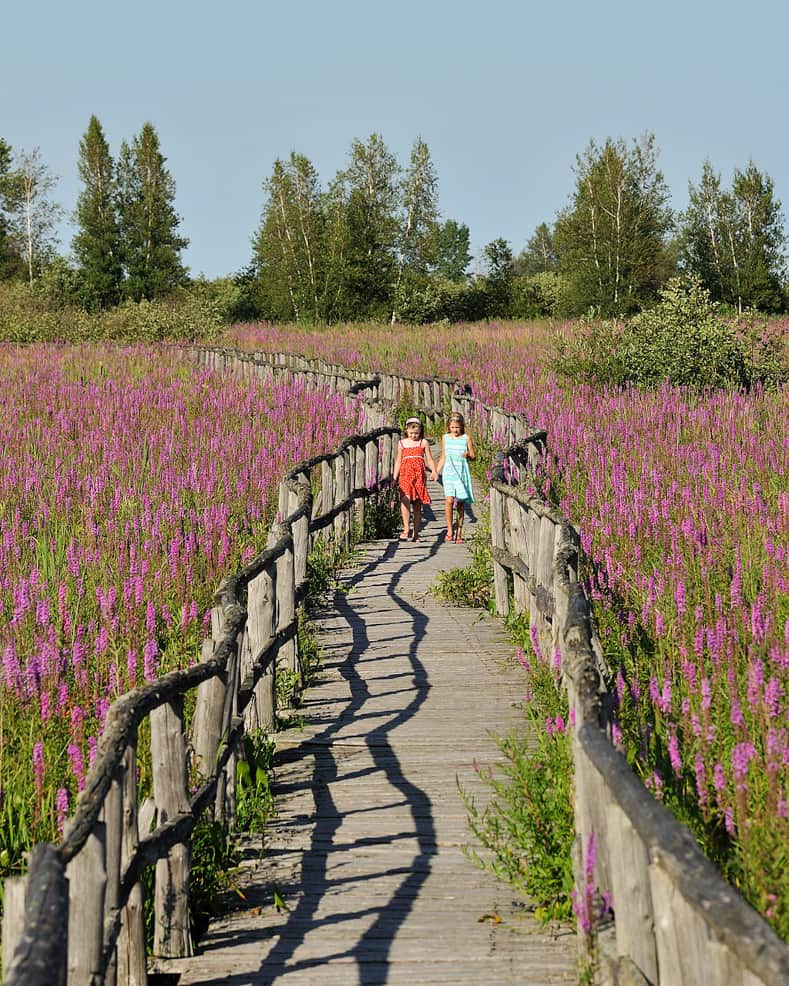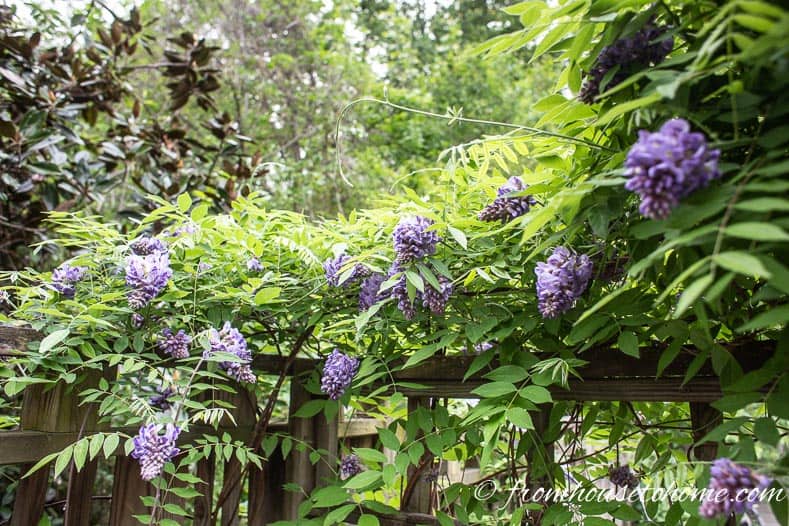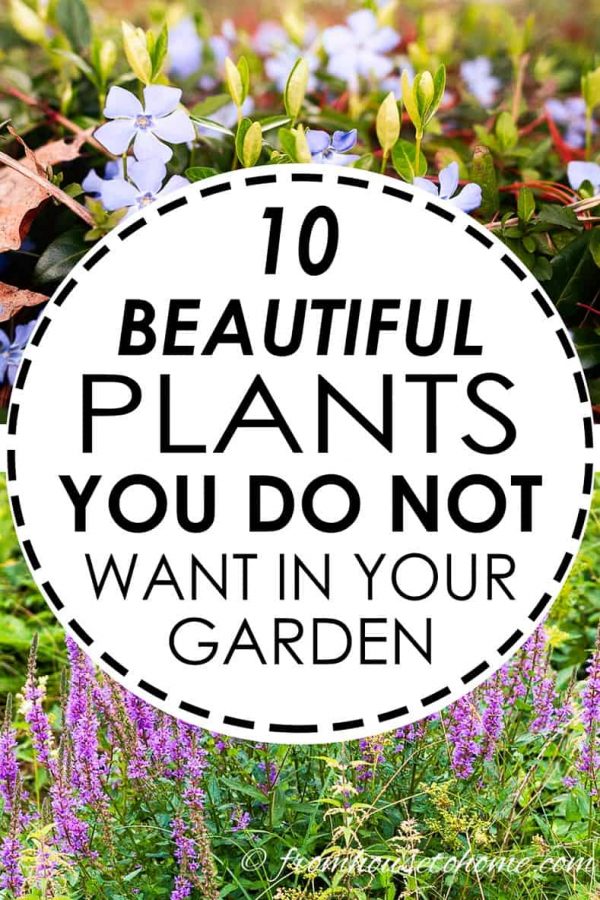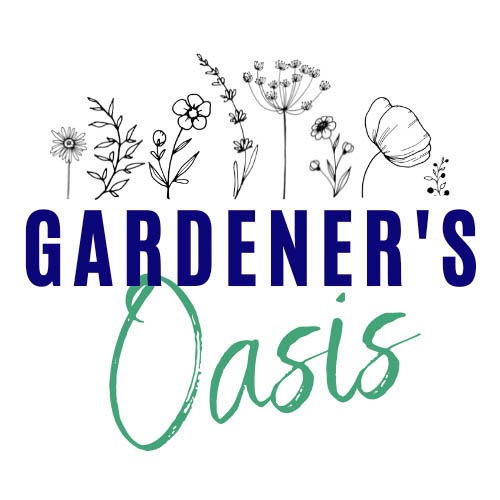10 Bewitching Perennials That Are Actually Garden Nightmares: The Invasive Species To Avoid
These invasive plants are all beautiful so you will be tempted to plant them in your garden. Find out which invasive species are not worth the hassle.

If you've been gardening for a while, you have probably come across some plants that try to overtake your garden.
I know I have (unintentionally) planted a few invasive plants over the years.
And they add so much more work to the gardening process! So now I'm very careful about choosing plants that are better behaved. (If you read my post on low maintenance gardening, you know that even though I love my garden, I also don't want to spend all of my free time working in it.)
They other problem with invasive species is that most of them can easily escape your garden. When they set up shop in a natural habitat, they really cause a lot of damage to the native ecosystem.
Here are some of the most beautiful invasive plants you do not want in your garden.
Whether or not these (or any other) plants will become invasive in your garden depends on the growing conditions in your area.
The plants on this list can all be found on invasive plants lists maintained by state and university extension programs. Which means they have the potential to become invasive.
But if you live in an area where the growing conditions are not favorable for the plants, they may not cause any problems…or may not grow at all 🙂
If you're not sure how a plant will behave in your area, talk to your local nursery and other gardeners in your neighborhood to find out.
Or check the Invasive Plant Atlas for North America, which provides maps of where different varieties of plants are considered to be invasive.
1 | Purple Loosestrife (Lythrum salicaria)

Purple Loosestrife (Lythrum salicaria) is a very hardy perennial that spreads easily and can choke out a natural wetland (or field) very quickly.
The density of the shoots kills all other plants in its path, which is why it is on many invasive species lists across North America (and has even been banned in some places).

This picture of the Cooper Marsh Conservation Area in Ontario, Canada shows just how invasive it can be.
Garden varieties of Loosestrife are still for sale in some places, and are sometimes included in wildflower seed packets.
Since these can cross-polinate with wild varieties to create seeds, make sure to double-check what you are buying.
2 | Japanese Honeysuckle (Lonicera japonica)

I have never actually planted Japanese Honeysuckle, but I do have first hand experience with how invasive it is.
Some of it is growing wild in the ravine behind my house and it is impossible to keep under control. I actually think it is worse than the kudzu (and if you live in a location where kudzu grows, you know how invasive it is).
This Honeysuckle has white and yellow flowers that are really pretty, and it smells wonderful when it is blooming. But it is definitely not worth the trade off of trying to keep it from strangling all other living plants!
Once it escapes into the wild (as it inevitably seems to do), it is devastating to the environment.
There are non-invasive varieties of Honeysuckle which will be just fine in your garden. It's the Japanese version that can cause problems.
3 | Autumn Clematis (Clematis terniflora)

Autumn Clematis is not a plant that I ever would have guessed to be invasive.
All of the other clematis varieties I have grown have always been very well behaved.
I planted this on my fence a few years ago, and it never did much in my yard (I thought it had died).
Then I was out pulling the kudzu and honeysuckle outside my fence, and saw this other vine that was growing everywhere. The blooms looked a lot like the autumn clematis I had planted, but I thought it couldn't be the same plant.
So I looked it up and found it on the Invasive Plant Atlas for South Carolina.
Of course, there are many non-invasive varieties of Clematis which absolutely deserve a spot in your garden. Don't be afraid to plant those ones!
4 | Wisteria (all varieties)

I hate to add Wisteria to this list (it is really beautiful when it is blooming!)…but having lots of personal experience, I really can't leave it off…
When I moved to South Carolina, a lot of people warned me that I shouldn't plant Wisteria.
I even had a co-worker tell me a story about over-turning a rented Bobcat trying to pull out Wisteria from the ravine at the back of his yard. But that still didn't stop me from planting it.

I read that the Chinese (Wisteria sinensis) and Japanese versions (Wisteria floribunda) of Wisteria were invasive (you can find them on the Plant Conservation Alliance's Least Wanted Vines list), but the American variety (Wisteria frutescens) was not on the list.
So how bad could it be? (I have since found out that only non-native plant varieties are classified as “invasive”. So because this is a native variety, it isn't on the list.)

Now that I have it growing in my garden, I can vouch for the fact that once it gets going, even the native variety grows like crazy.
It starts out as a little plant, and it takes a little while to get going. But once it does, look out!
You have to be really vigilant about pruning to keep it where you want it. The picture above was taken in the spring after I had completely cut the wisteria down to the ground in the fall. By the time it started blooming, it had completely covered the fence.
Then if you ever want to remove it, good luck 🙂
I tried to dig up a plant at the back of my yard 7 or 8 years ago, and I am still pulling rogue Wisteria plants out of the garden in that spot.
The lesson learned is…if you love the look of Wisteria as much as I do, you need to be prepared to do some work to keep it contained!
5 | Lily of the Valley (Convallaria majalis)

Lily of the Valley is a pretty woodland plant that blooms in the spring and has a wonderful perfume.
They are very easy to grow and will spread like wild fire, which is the first reason you don't want them in your garden.
But the second (and maybe more important) reason is that these plants are extremely poisonous.
Any pets or children (or even adults) that eat part of the plant will require immediate medical treatment.
6 | Periwinkle (Vinca minor)

Periwinkle is an easy to grow evergreen ground cover that does well in the shade and is covered with really pretty blue flowers in the spring.
Sounds great, doesn't it?
However, it also will overrun every other plant in your garden if you let it.

It starts out well mannered and seems like the perfect plant to add some interest underneath other plants in your garden.
But after if has become established (which takes a few years), it will start to grow up the stems of other plants and choke out any smaller plants in its way. Cxcept for the weeds which still seem to survive.
You can see it in the background of this picture where it is beginning to get to the “takeover” stage.
This is another plant that I have spent many years trying to eradicate from my garden, without success so far.
7 | Non-Clumping Bamboo (Phyllostachys aurea)

Ever since I saw this bamboo forest on Maui, I have loved the look (and sound) of bamboo.
It adds such a relaxing feel to the garden.

And then I saw the bamboo that had been planted along the railway tracks in South Carolina to act as a sound barrier. Which has now taken over whole backyards.
It is incredibly difficult to remove or contain once it has become established.
Since bamboo is part of the grass family, it is literally like grass on steroids.
If you've ever tried to keep a running variety of grass (like Bermuda) out of your garden, you know how hard it is.
Then think of trying to do that if the grass were the size of a bamboo plant!
There are some clumping bamboo varieties that are not as invasive, so make sure you plant one of these if you want bamboo in your garden.
8 | Pampas Grass (Cortaderia selloana)

Pampas Grass is another large perennial grass that looks beautiful and is very easy to grow.
It also grows very quickly into a large clump and will self seed freely.
And that's where the problem starts.
It can easily crowd out all other plants if you are not vigilant about keeping it in check.
Then if you try to dig it up, it has a massive root system that is very difficult to remove.
9 | English Ivy (Hedera helix)

Like a lot of people, I used to love using English Ivy in my hanging baskets.
It always looks so nice trailing over the edge of the pot.
But if even one little piece of it touches the ground, you will have more ivy than you know what to do with.
That's also what makes it so hard to get rid of. You have to remove every little bit of it from the ground or it will grow back.
10 | Carpet Bugleweed (Ajuga reptans)

As the name suggests, Carpet Bugleweed (Ajuga reptans) is another ground cover that on the surface seems like a great addition to your garden.
It's a low growing evergreen with purple-green leaves and beautiful blue-purple flowers.
And then it starts to spread and it's impossible to pull out. The roots are in there, and like the ivy, any little piece left in the ground will grow.

In fact, in my yard, it not only takes over the garden but will totally cover the sidewalk, too if I let it.
If you are looking for a more comprehensive list of invasive plants, try the Invasive Plant Atlas for North America. The site was developed by The University of Georgia – Center for Invasive Species and Ecosystem Health and the National Park Service, and is maintained by several university, state and federal extension programs.
invasive.org is another organization that maintains a database of all kinds of invasive organisms (not just plants) for North America.
Both sites provide maps with each plant listing that let you know where the plant is considered to be invasive.
Other plants you might like better
Or browse all our perennial plant ideas.
Do you have experience with any other types of invasive plants? Tell us in the section below.
Pin It So You Don't Forget It!

